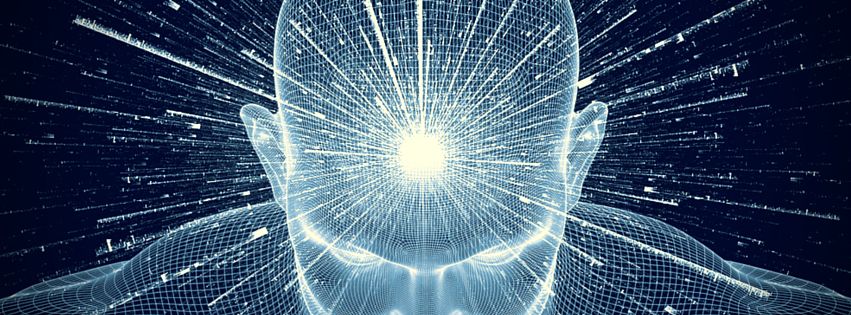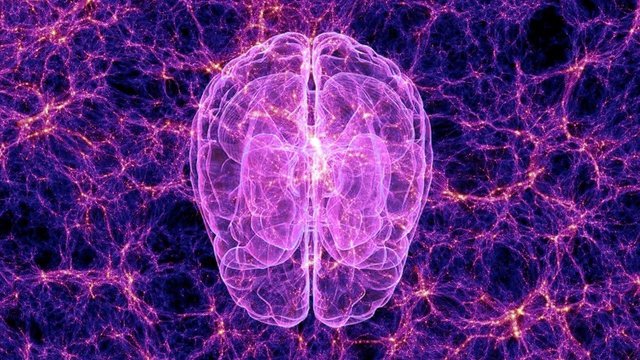Why humans think
The complex simplicity of conscious thinking
Where does it come from?
In the evolutionary process there was a time when special circumstances triggered the development of brain cells, and connections between them. In that stage, the extreme overproduction of cells could have led to:
- a random connection between efferent and afferent nerve fibers
- increase in mutations of cells and the existence of cells without purpose. At some point, a group of cells, which where distinct from most others, built up a new structure. This sructure was mostly independent of all other cells in the brain, but had input from some late-stage areas of the Brain and gave an output to sensory areas of the brain
- Maybe some axons have made it directly, or via few interneurons, from late-stage brain areas to sensory input areas.
- Maybe and just maybe, all these things happened in parallel, and variation in extend between species
- There are more ways for sure
Thus, some neuronal structure emerged which was able to transmit “computed” information back to sensory areas of the brain. Thereby creating a cognitive loop which makes continuous and recurrent processing possible.
That “structure” could serve as a faster (faster here is in comparison with other living creatures which have to rely on “similar”, more external-world-dependent feedback mechanisms (will be explained in more detail later)) way of getting “feedback” about our last action/output. Thus it was possible to let the input change, without changes in the external world. Other mechanisms, which “send” information about the predicted outcomes to a specific region, which is able to compare them with the actual outcome (actual change in Input) are good for learning but they are not sufficient when it comes to “conscious thinking”. (here conscious thinking will be seen as the process of “computing information”, which is already stored in the brain, and perhaps changing cognition through this “computation of information”. Without relying on external world-dependent mechanisms)
What is the use?
A mechanism that is largely independent of cognition and gives direct sensory input to the brain (that input is the output of the brain), has many properties to improve cognition.
The fact that, the Input to the brain is sensory, makes it possible to treat the input like every other input. It is thus computed (goes its route through the entire brain) like any other stimulus. The overlap with actual stimuli of the external world must not be too high, because then every thought of movement or other not-too-abstract thoughts would result in the actual initiation of that movement or reaction to the imagined scenario. However, since the stimulus is computed like every other, some overlap will always be there (we actually are scared when thinking about scaring thinks, and that effect of overlap is strongest if we think about things we actually have experienced with our senses).
The computation of these stimuli over and over again may mimic the way human thinking works. Thus, I start thinking about something (that, according to this model, should be triggered by some external stimulus or internal activation), for example I hear that my car was found somewhere, then the computation of this input gives the new “output”: This morning I gave the car to my daughter. That output gets send to the “external structure” and directly comes in at the sensory register again. Then this stimulus is computed again, giving the output: she may have left it somewhere where it was forbidden to park (this is dependent on/manipulated by earlier thoughts through, (a) lasting activation of just activated groups of cells or, (b) the integration of information through some kind of memory). This goes over and over again. Since the process I described is not really a step-by-step cycle, but more like a “never ending” stream of processing. It appears to us that we are in charge of all our behavior because through this stream of computation, which is largely independent of other sensory input, we are manipulating our own behavior and in the end are able to understand it. All of that, we do on the basis of what we already know.
That simply is consciousness
What to do?
If anything of this makes sense to more people than only me, it would be the next step to actually test the hypothesis. That could be done in several ways:
- Looking for a structure which is relatively unconnected with middle-stage regions of the brain, but has quit strong efferent connections from late-stage regions of the brain and afferent connections to the brains input regions
- That structure should differ in size and maybe also in function between different species
- That size and complexity (here complexity is just seen as the possible rate of information flow) should be proportional to the creatures extend of conscious thinking
- The one we would find in humans should thus be the most developed one (if we have the most developed consciousness on planet earth)
- That size and complexity (here complexity is just seen as the possible rate of information flow) should be proportional to the creatures extend of conscious thinking
- That structure should differ in size and maybe also in function between different species
- If we find agreement that in the brain of humans, we will find some structure like this or even structures. We could start with looking for the point where a structure like this emerged in some phylogenetically older creatures. If a structure like this first appears in (a) animals that are close to humans (thus primates or other “intelligent” animals like dolphins) or (b) similar structures, that are found in creatures which show little conscious thinking, differ in a meaningful manner from structures that are found in creatures with higher development of conscious thinking, thus the development of this structure is, in some way, proportional to the creature’s development of “conscious thinking”, then an involvement of the developmental state of this structure in conscious thinking would be likely.
- Another possibility would be to create a copy of a system that works similar to the human brain. And either (a) has that kind of structure or (b) has no structure like this (needs to relay on changes in external world). The a-version of that system should express a higher degree of conscious processing than the b-version.
- Or as a last opportunity it could be possible to build a kind of BCI which has some electrodes measuring the activity of certain cells in some late-stage brain area (maybe the motor cortex would be suitable because we know a lot about its functioning) and these activity levels are directly reincorporated in sensory registration areas (That could even be done by textile stimulation or some other sensible input of the human body).
that apparatus should increase the conscious perception of that specific motor output (which is linked to the motor area where the electrodes are bound to) and thereby should increase the performance of that specific motor act.- We are already doing it!!!
- Neurofeedback
- Mindfulness
- We are already doing it!!!
I would like to refute the broadly accepted idea, that consciousness has a “direct” connection with global availability. the ability to express knowledge in some way (e.g. language) would automatically be highly connected. Intuitively the idea sounds plausible. If I am conscious about something, I will be able to express it verbally or in any other way. When I perceive some fraction of the surrounding world consciously, I usually am able to integrate this information globally, that is I am able to change my behavior in several ways depending on that stimulus.
The problem here is that consciousness is not defined enough. As I have suggested earlier, for me consciousness is the ability to integrate information, which is already known, and maybe some highly selected stimuli from the environment (attention), into a computational process which is able to change the way the brain is “wired”. That computational process could, in my opinion, be the whole brain. It is generally believed that the structure of the brain of humans and animals is dependent on genetic and environmental factors. Thus, how the creature perceives the external world is dependent on the creature genetics and the exposure to certain stimuli of the external world. The high variability emerging from that “system” makes up the different personalities and behaviors across individual humans and animals.
Thus, in my opinion, a global availability of information may be important but not sufficient nor necessary for consciousness. In fact, I even have a problem with connecting consciousness and global availability in any way that goes beyond some overlaps. The availability of information in the mind is, in my opinion, dependent on 4 main factors: lasting activity of recently activated cells (1), activation of cells through external stimuli (2), activation of cells through recurrent connections (interacting with lasting activity of recently activated cells) (3), and the random activation of cells (4). This availability does imply conscious experience only if information is reintroduced in sensory areas of the brain. That means, the availability of information does not imply to be conscious about that information, but information has to be available (even if not globally (here available is seen as cells being active)) to be consciously manipulated.
My view thus is different in many ways. At first, I don’t think that consciousness can be explained in a way of detaching it completely from other processes of the brain. Second, It’s hard for me to imagine that every available information (thus any pattern of activated nodes, which represents some kind of knowledge) is at the same time conscious. Thus at least for me it happens that my conscious thoughts change in a fast way. E.g. when I am writing a text, I am not at all time conscious of every word I type, but rather my consciousness is surrounding the topic I am writing about -> thus not the words that are currently expressed (typed) are “in consciousness”, but rather everything what is in some way connected to the current conscious expression, will have a higher probability of getting conscious.
For me,
Consciousness is the utilization of already existing knowledge and mechanisms, in order to monitor, manipulate and integrate available information.

